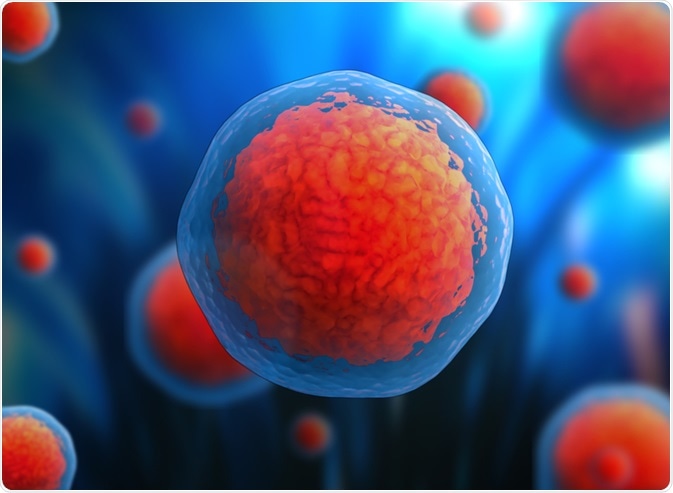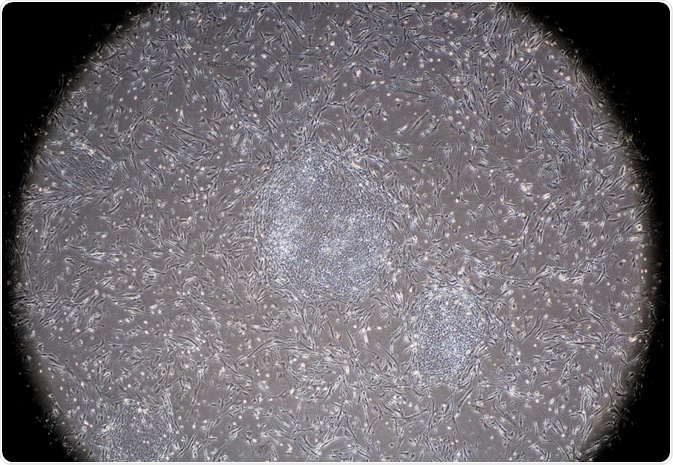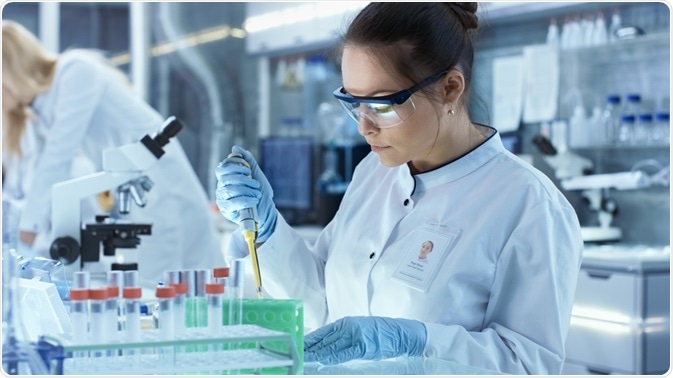Stem cells
Stem cells can develop into multiple different cell types during early life and during growth. They can also act as a repair system in multiple types of tissue due to their ability to divide and, therefore, replenish other cells.

Image Credit: Snailstudio/Shutterstock.com
During stem cell division, one cell remains as a stem cell whilst the other gains a capacity to have a specialized function. Stem cells have two key characteristics that allow them to be distinguished from other cells.
Firstly, they are unspecialized and can replicate indefinitely, even after a long period. In addition to this, they can gain a specialized function in an organ or tissue under certain conditions.
The gut and the bone marrow possess stem cells that divide regularly to replace worn out and damaged tissues. On the other hand, the heart and pancreas have stem cells that will only divide under certain conditions.
Stem cells have a huge amount of potential in regard to aiding the search for better drugs, and therefore their ability to treat human disease.
Drug research and development
The concept of stem cells is an area that has generated a lot of interest in previous years. Stem cells themselves offer a new avenue for both drug research and development in addition to providing a new avenue of examining the pathological basis of disease.
Therefore, this provides a new means for drug screening, testing the efficacy of potential new drugs, and screening patient populations for clinical trials.
The process by which stem cells would be used in the process would firstly be to identify a disease of interest and obtain samples. From this induced pluripotent stem cells (iPSCs) can be generated and expanded and differentiated into different components or cells also associated with the diseases.

Image Credit: Jan Bruder/Shutterstock.com
The key examples often associated with stem cell research are motor neurons due to their involvement in ALS or spinal muscular dystrophy. After the initial studies have taken place exploring disease mechanisms further screens can take place for drug discovery.
From this, compounds can be identified and pursued, whilst the efficacy and safety of the compounds can be interrogated through their effects on other cell lines. These differing cell lines may include ones that are influenced by side effects e.g. cardiomyocytes and hepatocytes.
Lead compounds identified at this stage can be tested further on patient-derived cells. Using patient-derived cells, it can help determine whether compounds could be more effective in a larger percentage of patients or even determine who is most likely to respond best to this newly identified compound.
From a translational perspective, this could be highly beneficial in reducing the costs associated with bringing a new drug to patients and the market as they can be highly interrogated in the preclinical stages.
This strict preclinical testing also allows for the development of safety profiles in addition to more carefully considering the target population.
Disease modeling
It is important to consider the maturity of the cell when modeling diseases as this could differ from the cell phenotypes seen in patients. ALS and SMA are both motor neuron diseases, however, they influence different cell subpopulations.
Within ALS, it is the innervating distal nerve cells that are affected. Whilst in SMA, the proximal muscles are affected; common to both diseases some motor neurons are not affected at all. Therefore, in attempts to model these diseases, one should attempt to model these specific subpopulations of neurons.
Whilst there are protocols in place to generate motor neurons, the neurons generated are not representative of a specific subpopulation. It is plausible to suggest that these generic neurons could be induced to differentiate further into more distinct motor neuron niches through exposure to morphogens and different stimuli such as transcription factors.
Furthermore, typically cells that have differentiated from pluripotent stem cells resemble their embryonic counterpart. When modeling late-onset diseases this can present problems as the cells generated would not be true of their mature phenotype exhibited in cells.
Due to the nature of neurodegenerative diseases taking many years to affect humans and in in vivo taking several months to become clinically apparent. Furthermore, neurodegenerative diseases are often sporadic and initiated by environmental cues.
Therefore, when these stem cells are exposed to these stimuli or cues in a concentrated and often long duration it can accelerate the pathological phenotype within a cell culture phenotype. A typical example of this would be using cellular pro-oxidants which can mitigate mitochondrial function and therefore influence the disease phenotype.
Lastly, neurodegenerative diseases are predominantly late-onset and sporadic in their presentation. Conversely, there is a small number of cases whereby there are distinct mutations present.
Moving forward with this presumption, one could establish an in vitro phenotype using genetic variants of the disease and attempting to alter the cell culture conditions to produce a similar disease pathology.
Future outlook
Stem cells possess numerous qualities that are an attractive option in improving the drug discovery pipeline and from the basic biology standpoint. Their properties allow us to develop many disease-relevant cells and subsequently establish possible new drug targets.
In addition, we can also gain a better insight into the disease mechanism. However, the research into stem cell biology is still limited due to the generic cell type generated rather than a specific niche which would better demonstrate the disease and its pathology.
Therefore, further work needs to be undertaken to generate specific cell niches to generate novel compounds.

Image Credit: Gorodenkoff/Shutterstock.com
References
- Takahashi, Kazutoshi et al. Induction of Pluripotent Stem Cells from Adult Human Fibroblasts by Defined Factors Cell,. Volume 131, Issue 5, 861 - 872
- Peljto M, Dasen JS, Mazzoni EO, Jessell TM, Wichterle H. Functional diversity of ESC-derived motor neuron subtypes revealed through intraspinal transplantation. Cell Stem Cell. 2010;7:355–366.
- Nguyen HN, Byers B, Cord B, Shcheglovitov A, Byrne J, Gujar P, Kee K, Schüle B, Dolmetsch RE, Langston W, Palmer TD, Pera RR. LRRK2 mutant iPSC-derived DA neurons demonstrate increased susceptibility to oxidative stress. Cell Stem Cell. 2011;8:267–280.
- Saha, K., & Jaenisch, R. (2009). Technical challenges in using human induced pluripotent stem cells to model disease. Cell stem cell, 5(6), 584–595. https://doi.org/10.1016/j.stem.2009.11.009
Further Reading
Last Updated: Jan 28, 2021